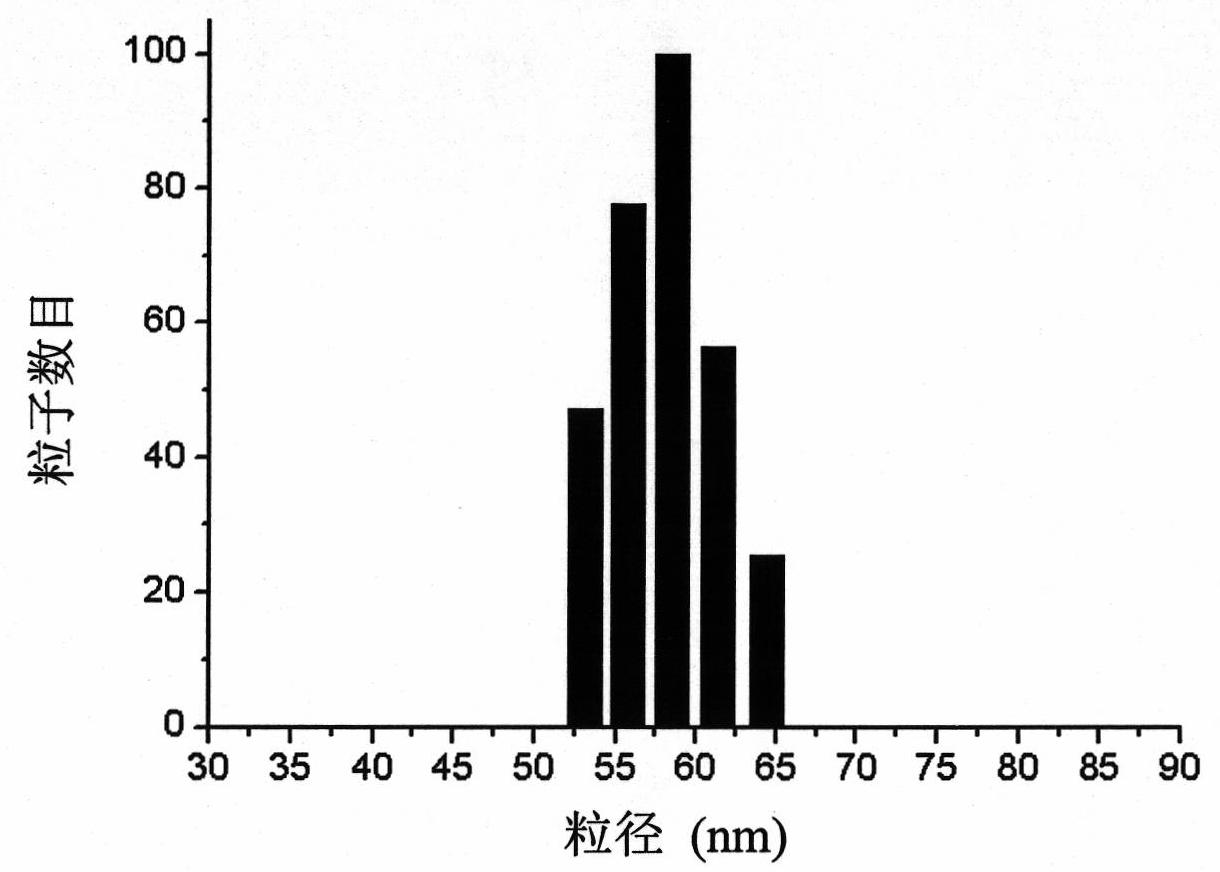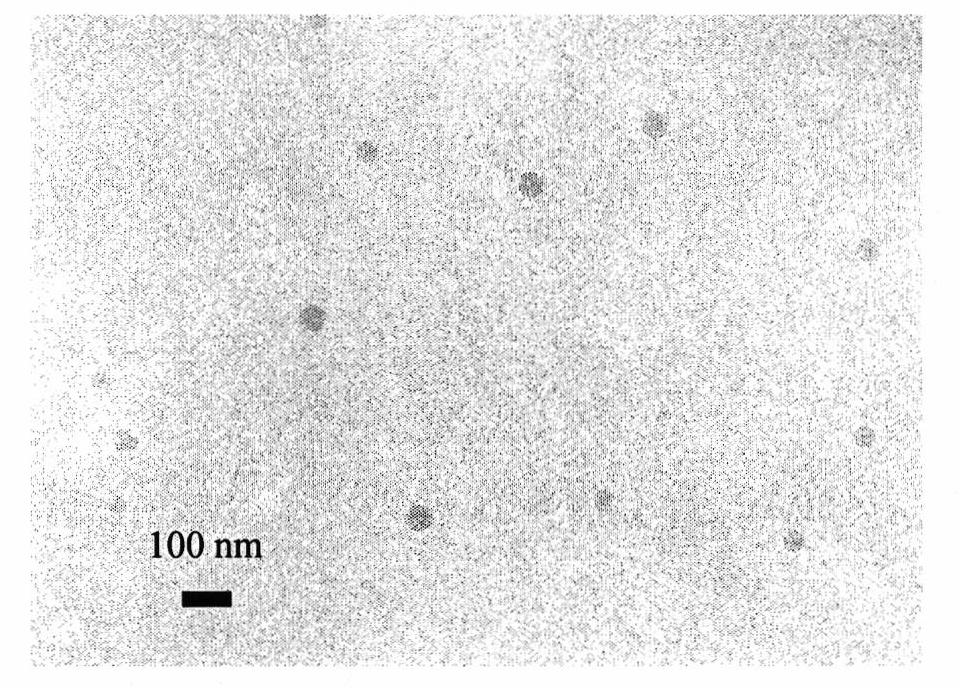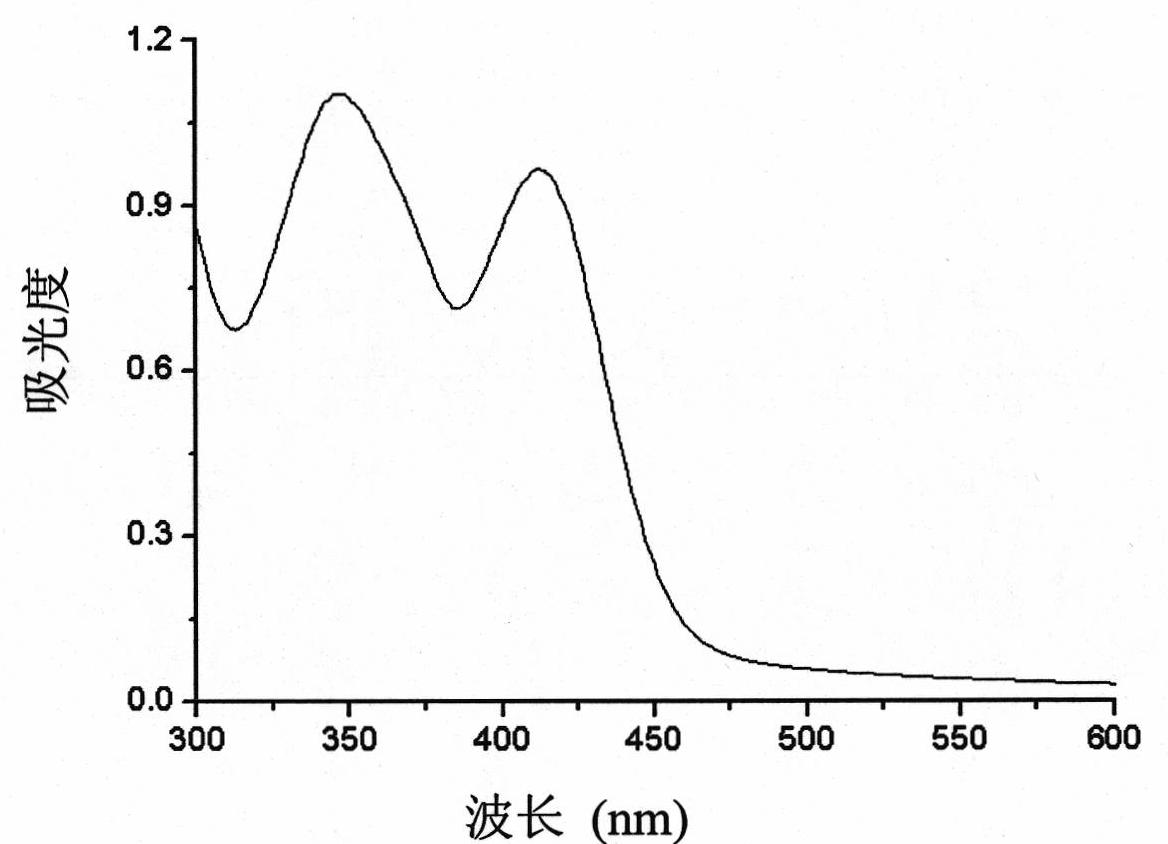Photoluminescent nano particle as well as preparation method and application thereof
A technology of fluorescent nanoparticles and particles, which is applied in the field of fluorescent nanoparticles based on rare earth complex fluorescent dyes and its preparation, can solve the problems of fluorescence quenching, large particle size, strong scattering signal, etc., and achieve large Stocks shift and excellent luminescence performance , the effect of high luminous brightness
- Summary
- Abstract
- Description
- Claims
- Application Information
AI Technical Summary
Problems solved by technology
Method used
Image
Examples
Embodiment 1
[0064] Embodiment 1, take methacrylic acid-methyl methacrylate copolymer as matrix material based on Eu(tta) 3 Preparation of fluorescent nanoparticles of dpbt
[0065] Get methacrylic acid-methyl methacrylate copolymer (number average molecular weight is 50,000, carboxyl group mass fraction: 1.0%) and Eu(tta) 3 dpbt (structure shown in formula VII) is dissolved in acetone to obtain acrylic acid-methyl methacrylate copolymer concentration of 1g / L, Eu(tta) 3 dpbt concentration of 0.1g / L acetone solution. Under stirring, 20 mL of the above solution was added dropwise to 80 mL of water, and the stirring was continued for 10 min. Acetone was evaporated at 30° C., centrifuged at 25,000 rpm (50,000 G), and the resulting precipitate was redispersed in pure water to obtain a sol of fluorescent nanoparticles containing carboxyl groups on the surface.
[0066]
[0067] Such as figure 1 As shown, the dynamic light scattering test results show that the average particle size of the ...
Embodiment 2
[0070] Embodiment 2, taking styrene-methacrylic acid block copolymer as matrix based on Eu(tta) 3 Preparation of fluorescent nanoparticles of dpbt
[0071] The copolymer in example 1 is replaced by styrene-methacrylic acid block copolymer (number average molecular weight is 100,000, styrene group mass fraction: 40%, carboxyl group mass fraction: 25%), this block copolymer The concentration is 10g / L, and the centrifugal speed is changed to 4000rpm, and the Eu(tta) based Eu(tta) 3 Fluorescent nanoparticles of dpbt. Such as Image 6 As shown, the dynamic light scattering test results show that the average particle size of the prepared fluorescent nanoparticles is 100 nm, and the particle size distribution range is 85-115 nm. Figure 7 It is the ultraviolet-visible absorption spectrum of the prepared fluorescent nanoparticle sol. It can be seen from the figure that the fluorescent nanoparticle has an absorption peak at 415nm in the visible region, and the scattering of visible ...
Embodiment 3
[0072] Embodiment 3, taking methacrylic acid-methyl methacrylate copolymer as matrix based on Eu(nta) 3 Preparation of fluorescent nanoparticles of bpt
[0073] Methacrylic acid-methyl methacrylate copolymer (number average molecular weight: 5,000, carboxyl group mass fraction: 10%) and Eu(nta) 3 bpt (structure shown in formula VIII, its preparation method is shown in Example 14) was dissolved in methanol, and the concentration of methacrylic acid-methyl methacrylate copolymer was prepared as 0.02g / L, Eu(tta) 3 bpt concentration is 2 x 10 -3 g / L methanol solution. With stirring, 25 mL of the above solution was added dropwise to 75 mL of water, and the stirring was continued for 10 min. Methanol was removed by vacuum rotary evaporation at 4° C., centrifuged, and the resulting precipitate was redispersed in pure water to obtain a sol of fluorescent nanoparticles containing carboxyl groups on the surface.
[0074] Figure 9 It is the ultraviolet-visible absorption spectrum o...
PUM
| Property | Measurement | Unit |
|---|---|---|
| particle diameter | aaaaa | aaaaa |
| concentration | aaaaa | aaaaa |
| particle size | aaaaa | aaaaa |
Abstract
Description
Claims
Application Information
 Login to View More
Login to View More - R&D
- Intellectual Property
- Life Sciences
- Materials
- Tech Scout
- Unparalleled Data Quality
- Higher Quality Content
- 60% Fewer Hallucinations
Browse by: Latest US Patents, China's latest patents, Technical Efficacy Thesaurus, Application Domain, Technology Topic, Popular Technical Reports.
© 2025 PatSnap. All rights reserved.Legal|Privacy policy|Modern Slavery Act Transparency Statement|Sitemap|About US| Contact US: help@patsnap.com



